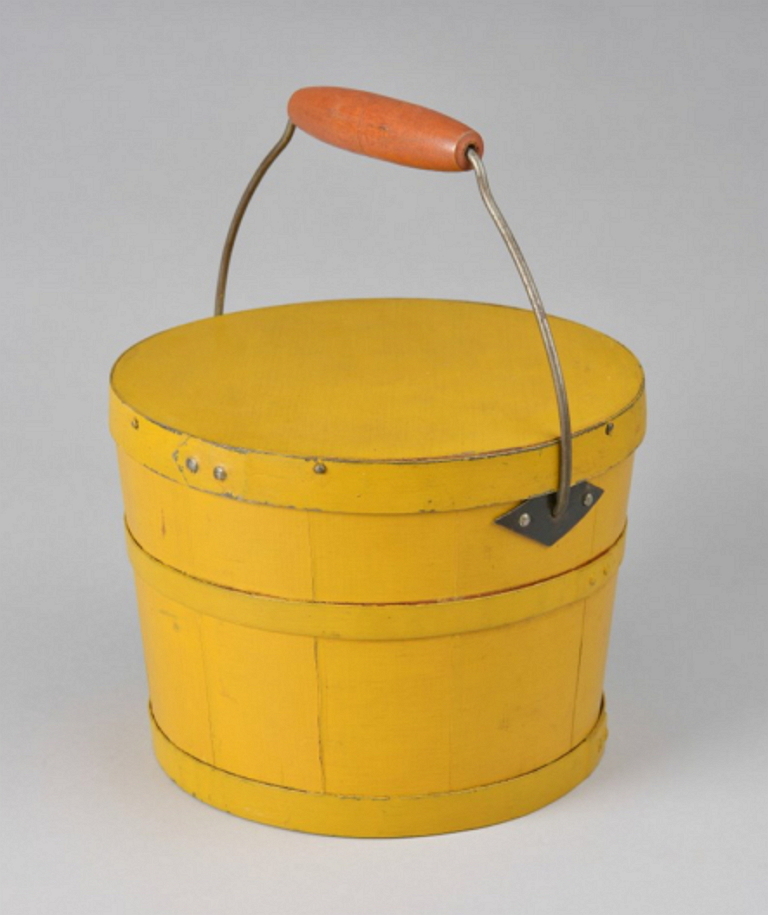Rug, Rag
Rag rug made by Sister Alice Smith, Church Family, Hancock, MA
ca. 1930
Description
"S and Z" twist woven rag runner with a repeated pattern throughout. One shot of 1/4" wool cloth on either side of four shots of plied woolen yarns. Plain woven; eight warps and wefts per inch. Very close sett for a woven rug. The colors utilized include indigo blue, white, red, and green. The binding is missing.
Notes
Alice Smith wove the rug for Faith Andrews in the 1930s. Faith Andrews donated the runner to Shaker Museum and Library in November 1984. Rugs made from woven strips of rag became popular in the United States in the 1830s. Rag rugs were inexpensive to produce: textile remnants were cut into strips, sewn together, and woven in a plain weave on a loom. Due to the nature and variety of the remnants, rag rugs tended to be random in their coloring and design. Rag rugs were produced more for their utilitarian value than for their aesthetic appeal. Characteristics that separate Shaker rag rugs from those made by non-Shakers include symmetry in the color pattern and application of tape or stitches to the edges. This rug has a weave pattern common to rugs of many Shaker communities. Using blue cotton warps, Alice Smith from Hancock, Massachusetts, created a repeating pattern that appears balanced and ordered. The pattern derives from changes in the color and twist-direction of the wefts. One cycle in the repeated pattern is as follows: four wefts of beige, red, and green strips in z-twists; one weft blue strip untwisted; one weft red strip untwisted; four wefts of beige, red, and blue strips in s-twists; one weft red strip untwisted; one weft green strip untwisted; one weft red strip untwisted; four wefts of beige, red, and blue strips in s-twists; one weft red strip untwisted; one weft blue strip untwisted. The rug contains eight warps and wefts per inch, and is plain-woven. A plain (or tabby) weave is the simplest weave to produce on a loom because it requires only two treadles to lift the alternating warps. Other weaves such as twill, herring-bone, or satin required four or more treadles. In other Shaker textiles like blankets, towels, and coverlets, pattern created by changes in the weave created the only decorative motif. This rug is the other extreme: decoration rooted solely in a repeated color pattern. Because of its shape this rug was intended as a runner for a corridor.
Massachusetts Hancock Church Family



